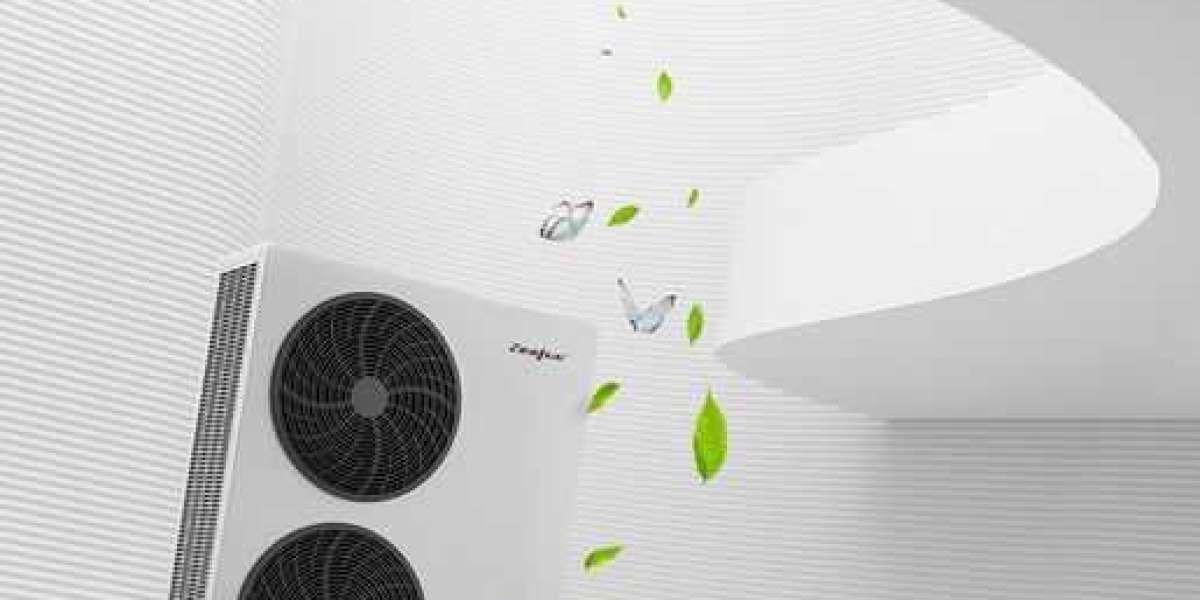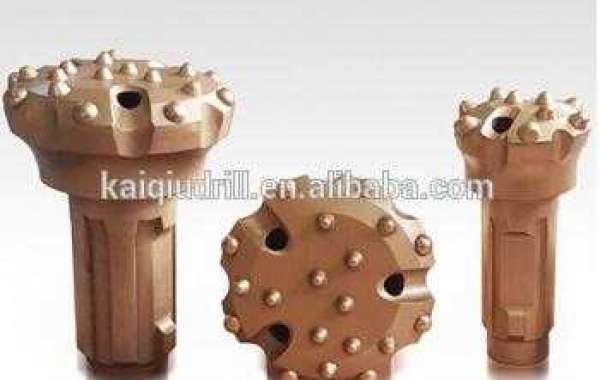Temperature regulation is critical in generating pleasant and efficient interior spaces. We now have a better grasp of the elements impacting temperature control and the novel methods available to optimize it thanks to advances in research and technology. This article delves into the most recent research findings and spotlights cutting-edge technologies that are revolutionizing temperature regulation in buildings. Building owners, managers, and occupants may improve their comfort, cut energy usage, and contribute to a more sustainable future by staying up to date on these innovations.
The Importance of Temperature Control in Buildings
Maintaining optimal temperature levels in buildings is vital for several reasons. Firstly, it directly impacts occupant comfort and productivity. Regardless of the building type, whether it's an office space, residential building, or educational institution, people perform at their best when the indoor environment aligns with their comfort preferences. When temperatures are too high or too low, occupants may experience discomfort, leading to decreased concentration, irritability, and reduced productivity. Maintaining a suitable temperature, on the other hand, offers a pleasant and conducive environment for work, study, and leisure.
Aside from occupant comfort, good control of temperatures adds significantly to energy savings. Heating, ventilation, and air conditioning (HVAC) systems consume a significant amount of energy in buildings, and excessive heating or cooling can result in considerable energy waste. Building owners can lessen the stress on HVAC systems by maximizing temperature regulation, resulting in less energy consumption. This equates to lower utility bills and a more sustainable building operation. Energy-efficient temperature management is also good for the environment since it reduces greenhouse gas emissions linked with energy generation. It supports worldwide efforts to prevent climate change and advocates for a greener, longer-lasting future.
Furthermore, effective temperature control can extend the lifespan of HVAC systems. When temperature regulation is not optimized, HVAC systems may need to work harder and longer to maintain the desired indoor temperature, leading to increased wear and tear. By implementing efficient temperature control strategies, such as proper insulation, smart thermostats, and zonal control, building owners can reduce the strain on HVAC systems, resulting in improved system reliability and longevity.
Understanding Thermal Comfort
To optimize temperature control in buildings, it is crucial to have a comprehensive understanding of the concept of thermal comfort. Thermal comfort refers to the condition in which individuals feel neither too hot nor too cold, resulting in a state of satisfaction. Achieving thermal comfort is influenced by several factors, including air temperature, humidity, air velocity, clothing insulation, and metabolic heat.
Recent research has shed light on the importance of considering individual preferences and variability when designing temperature control strategies. People have different comfort thresholds and temperature sensitivities, and their perception of thermal comfort can vary based on factors such as age, gender, activity levels, and clothing choices. Therefore, a one-size-fits-all approach to temperature control may not be effective. Instead, understanding occupant preferences and collecting feedback becomes crucial.
Occupant feedback and surveys play a significant role in optimizing temperature control. By actively seeking input from building occupants, facility managers, and designers can gather valuable insights into their comfort levels and preferences. This feedback can help identify patterns and trends, allowing for the customization of temperature settings based on the specific needs of the occupants.
In addition to occupant feedback, advancements in technology have made it possible to collect real-time data on thermal comfort. Sensors, occupancy detectors, and wearable devices can provide valuable information about individual comfort levels, allowing for more precise temperature control. Analyzing this data and combining it with occupant feedback enables a more nuanced understanding of thermal comfort and the development of tailored temperature control strategies.
By considering individual preferences and variability in thermal comfort, building owners and facility managers can enhance occupant satisfaction and well-being. Customizing temperature settings based on occupant feedback and real-time data not only improves comfort levels but also promotes energy efficiency. By avoiding over-conditioning or under-conditioning spaces, energy waste can be minimized, leading to cost savings and reduced environmental impact.
Innovative HVAC Technologies
Heating, ventilation, and air conditioning (HVAC) systems are undeniably at the forefront of temperature control in buildings, driving significant advancements in recent years to improve energy efficiency and occupant comfort. These advancements, supplied by reputable heat pump manufacturers and distributors, have transformed the industry and revolutionized the way buildings are heated and cooled.
One notable innovation in HVAC technology is the emergence of Variable Refrigerant Flow (VRF) systems. These systems, widely offered by HVAC manufacturers and wholesalers, utilize advanced controls and cutting-edge heat pump technology to provide zonal temperature control within a building. With VRF systems, different areas or zones can be maintained at customized comfort levels, optimizing occupant satisfaction. By modulating the flow of refrigerant, VRF systems can precisely match the heating or cooling demand of each zone, reducing energy waste associated with over-conditioning unoccupied spaces. This flexibility, combined with their high energy efficiency, has made VRF systems increasingly popular across various building types, from commercial establishments to residential complexes.
Another significant advancement in HVAC technology is the integration of smart thermostats equipped with artificial intelligence algorithms. These intelligent devices, often sourced from reputable HVAC manufacturers and distributors, can learn occupant behavior patterns and adjust temperature settings automatically. By continuously monitoring and analyzing data, smart thermostats adapt temperature settings to meet individual preferences and optimize energy consumption. They can detect occupancy, adjust the temperature based on occupant habits, and even optimize settings based on weather conditions. The seamless integration of smart thermostats into HVAC systems brings convenience, comfort, and energy savings to occupants while allowing building owners to achieve greater energy efficiency.
The integration of Internet of Things (IoT) devices and sensors further enhances the capabilities of modern HVAC systems. By connecting IoT devices and sensors to HVAC systems, real-time data collection becomes possible. These devices can gather information on occupancy, temperature, humidity, air quality, and outdoor conditions. HVAC systems can then dynamically respond to these changing conditions, adjusting temperature settings and optimizing energy usage accordingly. The ability to gather and analyze real-time data empowers building owners and facility managers to make data-driven decisions for efficient temperature control, energy management, and maintenance planning.
In conclusion, recent advancements in HVAC technologies, driven by reputable HVAC manufacturers and distributors, have brought significant improvements in energy efficiency and occupant comfort. The emergence of VRF systems, smart thermostats, and the integration of IoT devices and sensors have transformed temperature control in buildings. These innovations optimize comfort, reduce energy consumption, and promote sustainable practices.
Passive Strategies for Temperature Control
Alongside active HVAC technologies, passive strategies play a crucial role in temperature control, offering sustainable and energy-efficient solutions. Passive cooling techniques leverage natural elements and building design principles to reduce reliance on mechanical cooling systems.
Natural ventilation is a key passive strategy that promotes airflow and circulation, effectively cooling indoor spaces. By strategically designing openings such as windows, vents, and skylights, buildings can take advantage of natural wind patterns to facilitate the movement of fresh air. Cross-ventilation, which involves creating openings on opposite sides of a building to allow for natural air exchange, can significantly reduce the need for mechanical cooling. Stack ventilation, on the other hand, relies on the principle of hot air rising to create a natural upward airflow, expelling warm air and drawing in cooler air from lower levels.
Shading devices are another essential component of passive cooling. Overhangs, louvers, blinds, or exterior shading systems can block direct sunlight from entering the building, reducing solar heat gain and the need for excessive cooling. Additionally, vegetation such as trees, shrubs, and green walls can provide natural shade, mitigating the impact of solar radiation and reducing surface temperatures.
Thermal insulation is crucial for maintaining comfortable indoor temperatures. Proper insulation in walls, roofs, and windows help to minimize heat transfer, preventing unwanted heat gain in the summer and heat loss in the winter. By reducing heat transfer through insulation, buildings can maintain more stable indoor temperatures, reducing the reliance on mechanical heating or cooling systems.
Building design considerations also play a vital role in temperature control. Orienting buildings to take advantage of natural light and prevailing winds can optimize energy efficiency. Strategic window placement allows for daylighting while minimizing solar heat gain. Thermal mass, such as concrete or stone, can absorb and store heat, helping to stabilize indoor temperatures by acting as a thermal buffer.
Integrating green roofs and cool roofs can further enhance temperature regulation. Green roofs, covered in vegetation, provide additional insulation and evaporative cooling effects. They can significantly reduce the heat island effect and decrease the energy demand for cooling. Cool roofs, typically made of reflective materials, reflect a large portion of solar radiation, reducing heat absorption and keeping the building cooler.
Energy Management Systems and Data Analytics
Advancements in data analytics and energy management systems have revolutionized the optimization of temperature control in buildings. These systems harness the power of data by collecting and analyzing information from various sources, including sensors, weather forecasts, and occupant feedback. By utilizing machine learning algorithms and sophisticated data analytics techniques, these systems can extract valuable insights and drive continuous improvements in temperature control optimization.
Data analytics platforms process vast amounts of data in real time, enabling building operators to gain a comprehensive understanding of temperature patterns and trends. By analyzing historical data and identifying patterns, these systems can establish baseline temperature profiles for different spaces within the building. This knowledge allows operators to set appropriate temperature ranges and detect anomalies that may indicate equipment malfunctions or suboptimal performance.
With the help of machine learning algorithms, energy management systems can optimize temperature settings based on real-time data. These algorithms can learn from historical data and adapt to changing conditions, ensuring that temperature control remains efficient and responsive. For example, they can consider factors such as outdoor temperature, occupancy patterns, and weather forecasts to proactively adjust HVAC settings. By dynamically optimizing temperature control based on these factors, energy consumption can be minimized while maintaining occupant comfort.
In addition to optimizing temperature control, data analytics, and energy management systems provide building operators with valuable insights into system performance and energy efficiency. By monitoring energy usage, identifying areas of improvement, and detecting energy inefficiencies, operators can implement targeted strategies to reduce energy waste and enhance overall system performance. Today, some air to water heat pump manufacturers with advanced technology can achieve this intelligent control effect with only one air to water heat pump, eliminating the cost and trouble caused by human control.
 air to water heat pump manufacturers
air to water heat pump manufacturers
Occupant feedback is also a valuable source of data that can be integrated into these systems. Surveys and feedback mechanisms allow building occupants to provide input on their comfort levels, enabling operators to align temperature settings with occupant preferences. By incorporating occupant feedback into the data analytics process, operators can further enhance occupant comfort and satisfaction.
Conclusion
The latest research and technology advancements, along with the support of specialists in this field, provide valuable insights into optimizing temperature control in buildings. By considering thermal comfort, embracing innovative HVAC technologies supplied by heat pump suppliers, integrating passive strategies, and leveraging data analytics, building owners and managers can achieve optimal temperature regulation. This comprehensive approach ensures that buildings are not only comfortable but also energy-efficient and environmentally friendly.

 heat pump manufacturer
heat pump manufacturer






